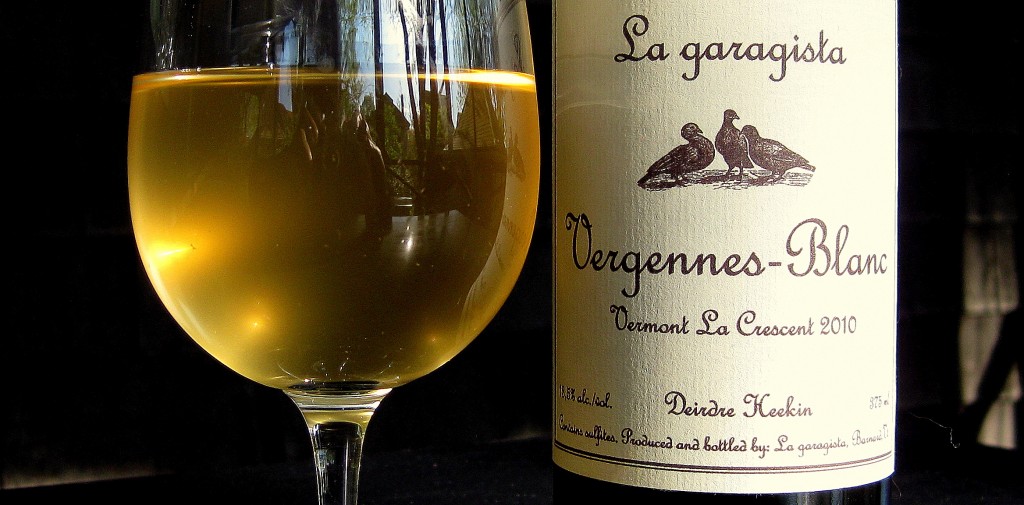 IT’S EASY TO FORGET that at one time the celebrated vineyards of northern Europe were nothing more than wooded hillsides. The Romans, who generally took the long view of things, planted vines wherever they thought there was a chance they would thrive. The further north they moved, the more challenging viticulture became. In higher northern latitudes the cold can be severe enough to winter-kill vines; sunlight so meager grapes do not ripen sufficiently to make a stable, palatable wine.
IT’S EASY TO FORGET that at one time the celebrated vineyards of northern Europe were nothing more than wooded hillsides. The Romans, who generally took the long view of things, planted vines wherever they thought there was a chance they would thrive. The further north they moved, the more challenging viticulture became. In higher northern latitudes the cold can be severe enough to winter-kill vines; sunlight so meager grapes do not ripen sufficiently to make a stable, palatable wine.
In the northeastern U.S., winemaking has struggled with a similar set of problems. One solution has come in the form of hybrids that attempt to marry the cold-hardiness of native American species vitis labrusca and vitis riparia with the finer qualities of vitis vinifiera, the more familiar Eurasian version of the vine and the source of popular varieties like chardonnay and merlot.
Another strategy in these marginal areas is to fall back on fermentations of fruit other than grapes (apple, blueberry), on fruit distillates and eaux de vie, on grain or vegetable-based spirits, on beer, or on mead (made from honey).
In Vermont, a place known for harboring communities devoted to the craft approach to producing goods of many kinds, you’ll find people dedicated to all of the above. But for some, the challenge of making classically-proportioned table wine in the European tradition is a siren song too seductive to turn from.
At the micro winery called La garagista in Barnard, Vermont, Deirdre Heekin is making two wines that fall clearly into this category, both from hybrids: a sturdy, full flavored red from the marquette grape and a splendidly fresh and aromatic white from the la crescent variety. They are marketed as Vergennes-Rouge and Vergennes-Blanc respectively, since while Heekin has planted these two hybrid varieties as well as frontenac (blanc, gris, and noir) and the vinifera cultivars riesling, blaufrankisch on her property on Hunger Mtn. Rd. the fruit in these two was grown in the Champlain Valley near the town of Vergennes by Panton Hills Vineyard.
In a telephone conversation, Heekin noted that there are not enough grapes being grown in Vermont to supply all the people with an ambition to make wine there. La garagista’s production is miniscule. All told, 255 375ml (half-size) bottles of the Vergennes red were made; 170 of the white. They sell for $20 and are available at Heekin’s farm and vineyard or at Osteria Pane e Salute, the remarkable little resto she and husband Caleb Barber own and operate in Woodstock village.
I particularly liked the white wine for its leesy texture and frothy exuberance (some dissolved CO2 is liberated on opening). It reminded me of homestead wines I sipped in the mountains of Cyprus made from the xynisteri grape — refreshing, authentic, full of character.
Heekin’s other efforts include Champagne-method sparkling ciders and, with Eden Ice Cider Co., an apple and herb-based aperitif called Orleans.
The future of Vermont winemaking looks like this. And it looks encouraging.
Notes
La garagista Vergennes-Blanc 2010. Geen-gold hue veers toward olive with some slight turbidity; bright, spicy, sweetish pear-anise-melon aromas, some mineral aspects; rich, leesy texture, round mouth-filling volume, lip-smacking acidity, real ripeness here even some tropical aspects. Bit sudsy straight from the bottle; Fruit/acid balance particularly gratifying. 15.5/20
La garagista Vergennes-Rouge 2010. Deep, limpid bluish-purple hue; nose rather sweet and rich with baked plum-black cherry fruit and some tarry, burnt aspects; mouth fruit-sweet with very lively acidity and big shovelful of loamy earth; some chewy, but cushy tannins. 14.5/20
[This post was originally published on Boston.com]
Follow @stephen_meuse